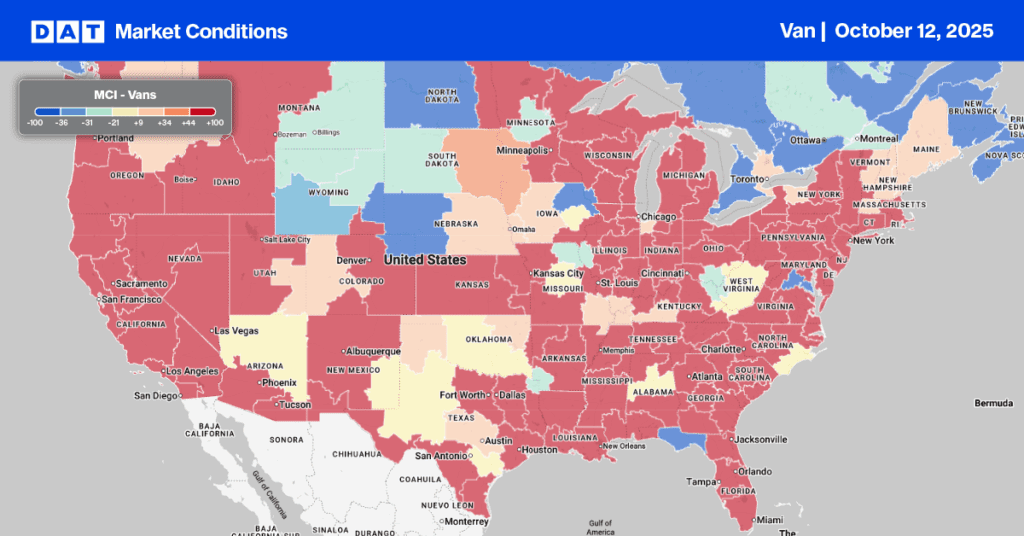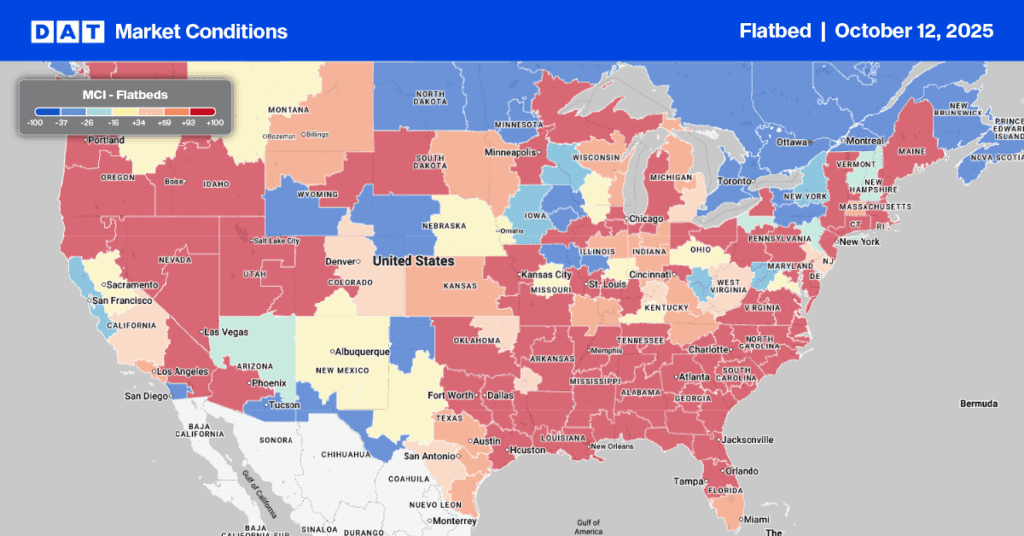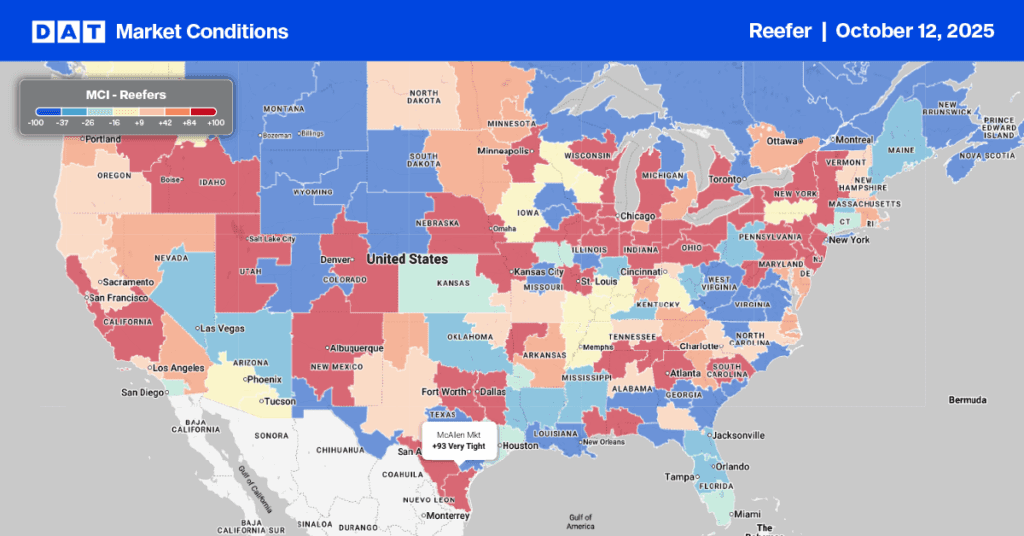On a recent DAT iQ Live, we hosted two Ohio State University alums, Ken Adamo and Terry Esper, joined by Michigan State University professor Jason Miller to discuss Buckeye football, logistics, and supply chains. The complete version of the show can be found here, but here’s a quick excerpt of their conversation as they discuss the market.
Get the clearest, most accurate view of the truckload marketplace with data from DAT iQ.
Tune into DAT iQ Live, live on YouTube or LinkedIn, 10am ET every Tuesday.
Ken Adamo:
How will the next freight market cycle shape up, and what changes resulting from the pandemic will be permanent?
Terry Esper:
I’ve been looking at that through the lens of what’s happening in the market as a whole, particularly looking at what’s going on globally. And we’re seeing so many global shifts, which dictate how everything gets managed regarding network cost supply chains. We’re seeing numerous initiatives implemented to reduce supply chain risk. I think there will be some tapering of the online retail hype that happened over the last three to four years, and that will pull us back to, I believe, some normalcy. This also will pull us back to maybe more significant freight moves through the supply chain.
Jason Miller:
Coming out of the current cycle, I expect it to be very muted, and the next time we start to enter the bull market territory, it’s not going to feel like 2017 or 2018, where there was a big shock of demand due to business investment. The demand was the product of hurricane recovery efforts and a big commodity market boom. The second fracking boom that took place during those years is not happening this time around.
So, how we exit this cycle will be more muted on the truckload side than the less-than-truckload (LTL) side. We’re waiting for August PPI data to see where pricing has moved. I believe that the soonest we will start to come out of the freight volume recession is the second quarter of 2024 – which is the best-case scenario. The worst-case scenario is we’re looking at 2025. And when you go back historically, it was typical for there to be two three-year freight recessions in a cycle during the late 1980s into the 90s.
Dean Croke
What could catalyze a bull run similar to what we saw in the last two freight cycles?
Jason Miller
If the Fed starts lowering interest rates early in 2024 – in February or March – single-family housing would be the one thing. There is a tremendous amount of homebuyers waiting in the wings for interest rates on mortgages to come down. If interest rates decrease, that would be the most significant catalyst for the freight market.
Ken Adamo
What’s your best assessment for a freight recovery now that the UAW strike has started?
Jason Miller
An extended UAW strike will eliminate any chance of there being any recovery as we move into the fourth quarter of this year. I don’t see any Q4 freight activity recovery that’s not beyond just traditional seasonality.
To assess the impact of an extended UAW strike, we need to go back to 2019 when we saw motor vehicle and parts production decline 5.5% from August to September, then 11% in October from August, so the decline doubled. Regarding freight activity, the MSU Ton-Mile Index observed a 0.5% seasonally adjusted decline in September from August that accelerated to about 1.1% in October from August. So you start multiplying this out and say that in 2019, the strike involved 48,000 workers; this time, we’re looking at about 150,000 workers at the Big 3 U.S. automakers.
If we multiply the 2019 impact by a factor of three, we can expect a 15% decline in motor vehicle parts production this month, followed by a 30% decline in October. A 30% decrease is the equivalent of when we shut down motor vehicle production in March 2020 into the back half of that year. That would translate into a 1.5% decrease in the Ton-Mile Index this month, followed by a 3% drop in October. An increase of that magnitude next month is equivalent to the February 2021 polar vortex in terms of disruption.
The complete version of the show can be found here.


